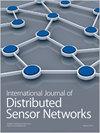Cognitive Radio Spectrum Sensing-Based QAM Technique Using Blockchain
IF 2.5
4区 计算机科学
Q1 Engineering
引用次数: 0
Abstract
Cognitive radio (CR) is a novel concept developed to solve concerns such as spectrum underutilization and scarcity. Spectrum detection methods are employed in the blockchain-based CR to make optimum use of the spectrum reserves. In this paper, an attempt is made to evaluate the effectiveness of an energy sensor using collaborative spectrum detection. Wideband is defined as the frequency range between 470 MHz and 790 MHz, and additive white Gaussian noise (AWGN) is employed. The probability of detection ( ) under different situations is examined using detection in the receiver operational curve (ROC). According to the findings, the increases with the number of samples. This form of sensing, which is thought to be the easiest and best, uses energy-detecting spectrum sensing. To address ambiguity, the M-ary QAM technique is provided, which increases aggregate effectiveness in terms of the percentage of false alarm ( ) and probability of missed detection ( ) by 5% at a comparable delay period. When CR encounters shadowing and impacts situations, the client cannot tell the difference between an underutilized zone and fading. In comparison to the existing model, this study increases the likelihood of detecting a 3 dBm SNR for a 64-QAM modulated signal by at least 15%.基于区块链的认知无线电频谱感知QAM技术
认知无线电(Cognitive radio, CR)是为了解决频谱利用不足和频谱稀缺等问题而提出的一个新概念。在基于区块链的CR中采用频谱检测方法,使频谱储备得到最优利用。本文尝试用协同频谱检测来评估能量传感器的有效性。宽带定义为470mhz ~ 790mhz的频率范围,并采用加性高斯白噪声(AWGN)。在不同的情况下,检测的概率(P d)是用检测在接收者工作曲线(ROC)。根据研究结果,P d随着样本数量的增加而增加。这种形式的传感,被认为是最简单和最好的,使用能量探测光谱传感。为了解决歧义,提供了m -ary QAM技术,该技术在可比较的延迟期间内将误报百分比(pf)和漏检概率(pm)的总有效性提高了5%。当CR遇到阴影和影响情况时,客户端无法区分未充分利用的区域和衰落之间的区别。与现有模型相比,本研究将64-QAM调制信号检测到3 dBm信噪比的可能性提高了至少15%。
本文章由计算机程序翻译,如有差异,请以英文原文为准。
求助全文
约1分钟内获得全文
求助全文
来源期刊

International Journal of Distributed Sensor Networks
Computer Science-Computer Networks and Communications
CiteScore
6.00
自引率
4.30%
发文量
94
审稿时长
11 weeks
期刊介绍:
International Journal of Distributed Sensor Networks (IJDSN) is a JCR ranked, peer-reviewed, open access journal that focuses on applied research and applications of sensor networks. The goal of this journal is to provide a forum for the publication of important research contributions in developing high performance computing solutions to problems arising from the complexities of these sensor network systems. Articles highlight advances in uses of sensor network systems for solving computational tasks in manufacturing, engineering and environmental systems.
 求助内容:
求助内容: 应助结果提醒方式:
应助结果提醒方式:


